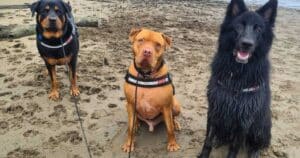
Separation anxiety in dogs can be a very tough issue to deal with and, unfortunately, there is often no one simple solution to help.
It is becoming even more common since the pandemic, where many dogs got used to having their family at home all the time. Even for dogs that have not shown any pre-existing signs of anxiety, going from having someone at home all day to suddenly only mornings and nights, is likely to take an emotional toll and is leading to the increase in separation anxiety in dogs.
There are many reasons why a dog can suffer separation anxiety and it is important that you understand the underlying reasons for separation anxiety in dogs, which may include one or more of the following:
While there are many treatments for the different types of anxiety, when treating separation anxiety in dogs it is important to identify the underlying cause so that the appropriate treatments applied.
It is a tough issue to deal with, especially if it is severe, as the experience for the dog can be likened to that of a full-blown panic attack that a human might experience when they are feeling out of control and can’t predict what is going to happen next.
This is why we see a range of problem and destructive behaviours occur from excessive barking, toileting inside, digging and chewing things, scratching the doors and trying to escape the home. Some dogs have even chewed through doors in their panic, so it is vital you do not punish your dog who is crying out for help.
There is no one-cure-for-all treatment, so it is important to try to identify the underlying issue. And, as soon as possible, as more it happens the worse separation anxiety in dogs becomes.
You can read more information to help you understand why the above tips are used to treat separation anxiety in dogs with leading Vet Behaviourist, Dr Robert Holmes HERE.
How to change your routine
As creatures of habits, we tend to have the same routine day in day out as we get up and get ready to head out to work.If you have the same routine then pick up your bag and keys every time you disappear from their life for a long period, these become ‘triggers’.
So to help desensitise them to your departure, constantly change your routine, or make it a positive one by leaving them with a treat, long lasting chew and interactive toys every time you leave. You could even throw in a Treat Treasure Hunt upon your departure.
It works similarly for other cues such as shopping bags. You might have a dog that doesn’t get too bothered when you head out with your grocery bag, because they know it is usually a short trip. By shaking things up with those ‘triggers’, and not having them always signal a long departure, you can start to desensitise them to them.
Check out my ‘Looney Lara’ video on how to change your routine on You Tube HERE.
This is also why I suggest if you are going away without your pets, that you pack your suitcase when they are not around. Especially if they have learned that the suitcase is a cue for you going away and leaving them at home.
Take them for a walk before you leave
Another key when addressing separation anxiety in dogs is to take them for a walk before to work each day, even if it is just a 10 minute one so they can get out and have a sniff around outside. I can’t emphasize enough how important it is for a dog to get out and smell the world around them every day. Read about that HERE.
A good 30 minute walk when you get home from work is great, but if you can set their day up well by giving them at least a little time to get outside and communicate with the world before being inside or in the yard all day, it can really help their mental and physical wellbeing which is important when treating separation anxiety in dogs.
Break up their day or week with play dates
Talk to friends or neighbours to see if you can drop them off for play dates on some days with dogs they like, share the load with friends or get a doggy walker to come in as well on some days.
When treating separation anxiety in dogs , it’s about keeping their brains and bodies active during the day (as in the wild they would be out roaming hunting for food all day) to stave off anxiety and boredom and prevent problem behaviour such as barking, digging, chewing. You may be surprised how many friends may love to take turns with you hosting the dogs to have play dates – it can help you both.
Don’t make a fuss
It is also really important to help prevent separation anxiety in dogs that you don’t make a big fuss before you go or when you get home. Of course, don’t startle them by disappearing suddenly, but just go in and out a bit with a calm, “good dog” and positive reinforcement training when they are acting calm or disinterested, (which they will if you start to bore them with all your comings and goings). Then when you start going out for longer periods of time they will hopefully start getting used to you coming and going and not be as fussed.
My two ‘boys’ have learnt that the sound of my keys means they are going to get a treat, the longer I’m leaving, the more of a longer lasting chew it will be. So before I have even grabbed my bag they are both sitting on their beds waiting for their treat. They get a “good boy”and treat each, Dog TV put on for them and a quick “won’t be long” and out I go.
Don’t reinforce anxiety
When addressing separation anxiety in dogs, you also need to build confidence in your dog and be a calm and assured leader, so that they know you are safe out in the big bad world without their protection, and that they are safe in the house or backyard. It’s also important that you are not reinforcing the anxiety in your dog across the board.
As mentioned already, but is something that can’t be ignored, it is vital that they are kept mentally and physically active when you are out using interactive toys, adequate exercise and providing them with a warm, safe spot to sleep and keep out of the sun or rain.
If your dog is suffering from severe separation anxiety then it is strongly recommended to talk to your Vet and seek the help of a qualified and experienced trainer. Without this expert help separation anxiety in dogs continues no matter what changes you try to make at home.
Again, you can read more about the signs and treatment of separation anxiety in dogs with leading Vet Behaviourist, Dr Robert Holmes, HERE.
About the Author: Lara Shannon is a certified dog behaviourist and trainer, pet food nutrition specialist, Executive Producer and Host of Pooches at Play on Channel 10 and editor of Poochesatplay.com. Lara also runs her own dog training business in Melbourne’s Bayside area and is the Author of World of Dogs and Eat, Play, Love Your Dog

Poor gut health and dog behaviour issues
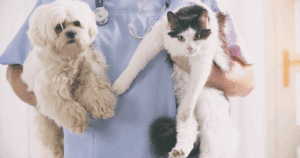
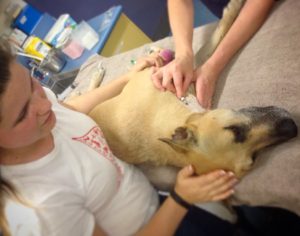
Dog blood donations save lives
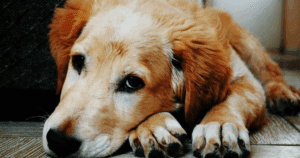
Treating Noise Phobia in dogs and cats
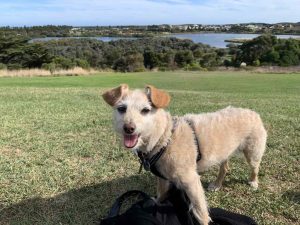
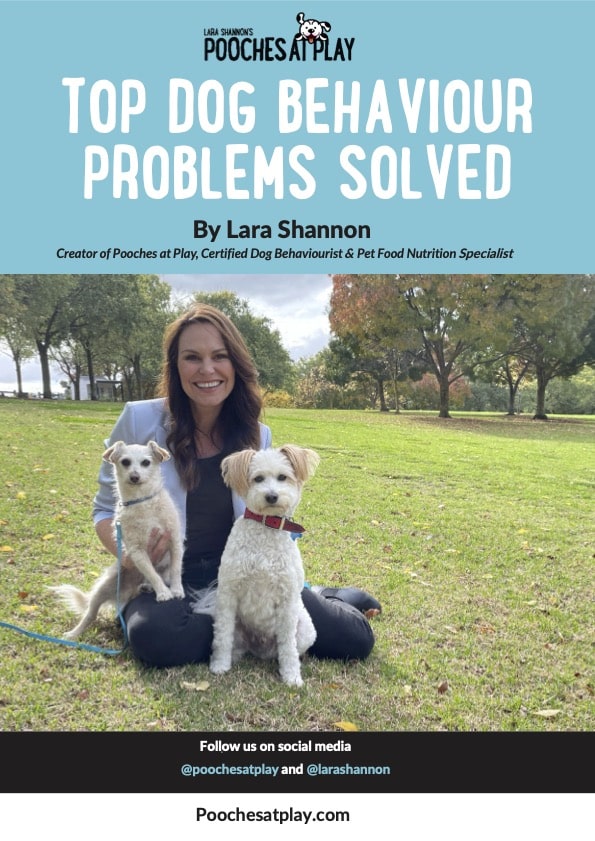


Get your paws on Lara Shannon’s best selling books ‘Eat, Play, Love (your dog) and World of Dogs.
Available in Australia, USA, UK and Canada.